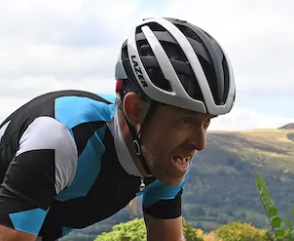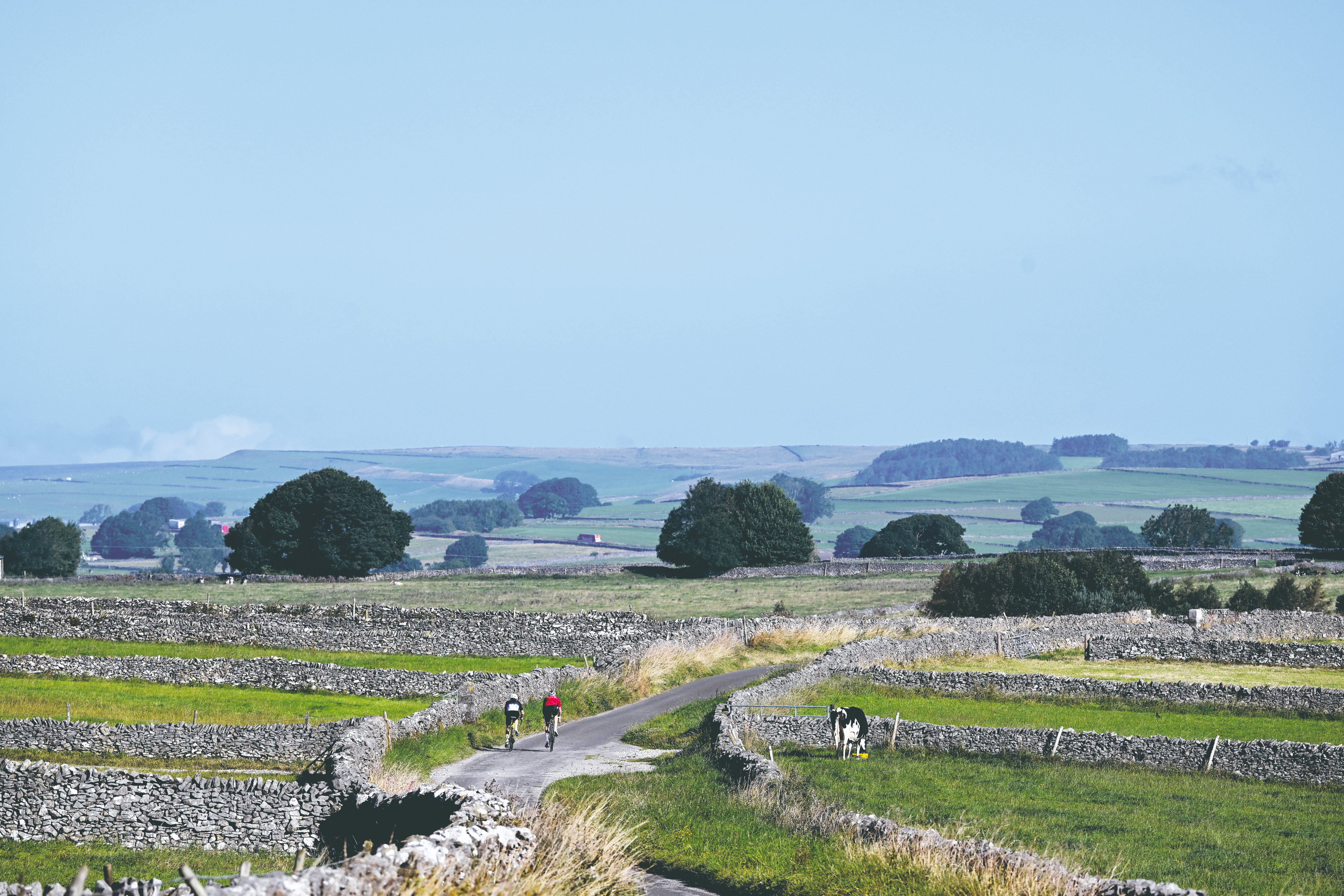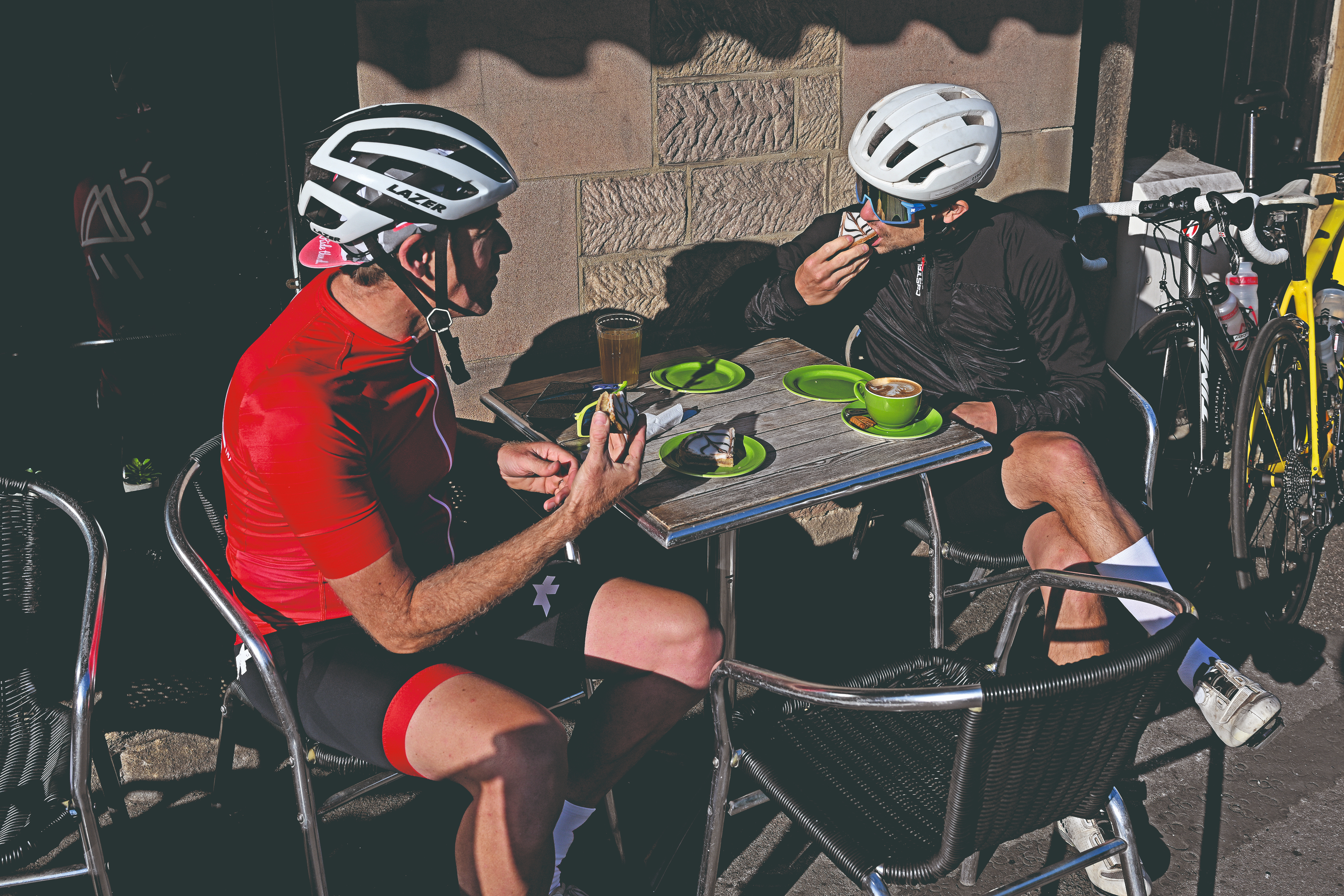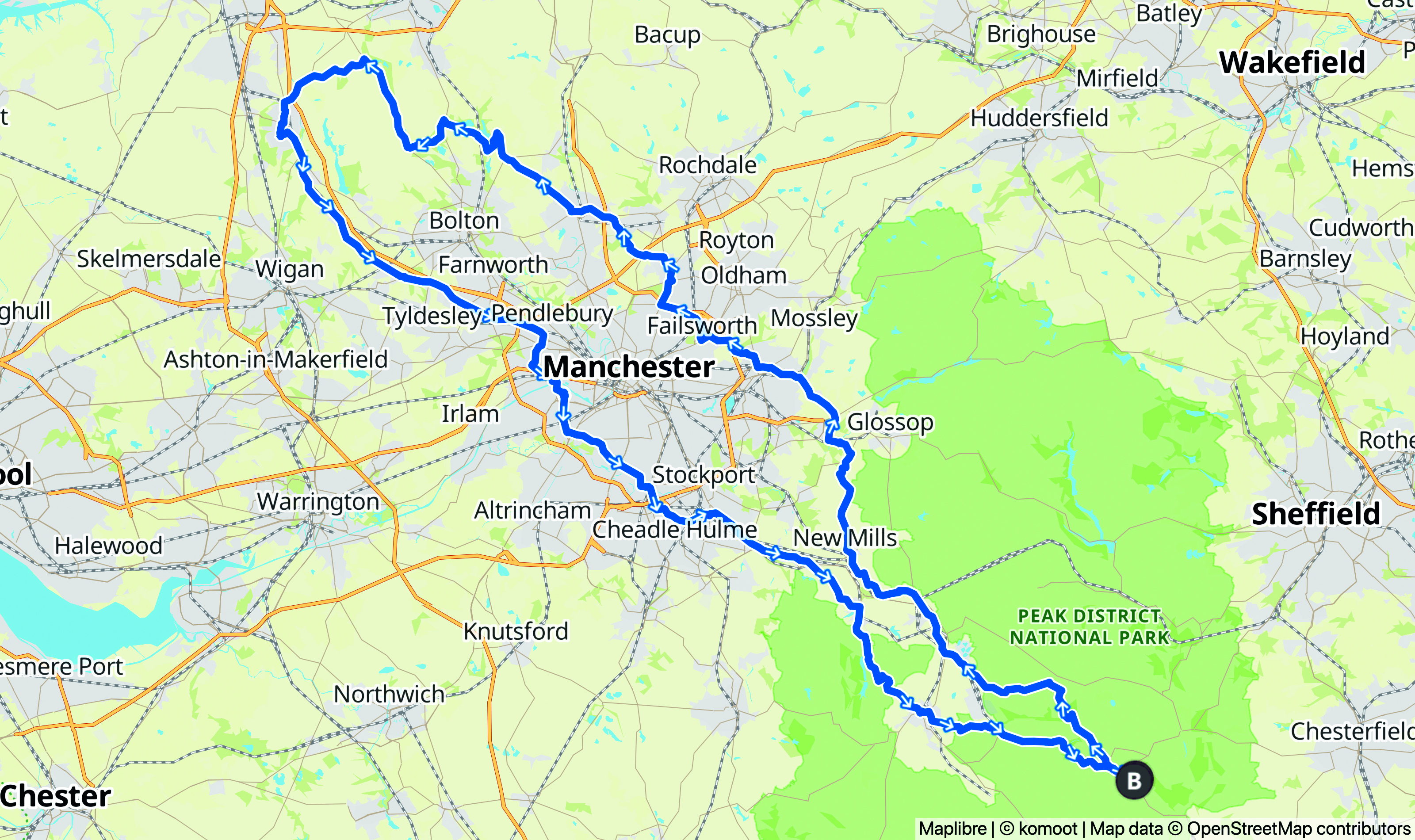I'm not into cake stops - but - I made an exception to rate five British delicacies in one ride
Of all the cakes named after places in the north-west of England, which is the tastiest? Simon Warren sets out to sample them all in a single epic ride


As a general rule, I don’t stop for cake. I’ve nothing against it, but I don’t drink coffee and I don’t have time for leisurely cafe rides – if my family found out I was sitting around chatting and scoffing cake on a Sunday morning, there would be hell to pay. OK, it’s the guilt, too: I’m 51, and I’m worried about all that sugar and fat going straight to my hips. For this ride, though, I would be stopping for cake – because this ride was all about cake. My plan was to link together north-west England locations places famous for their cakes, stopping at each to try their eponymous specialities, forming a 215km route from Bakewell to Chorley and back.
It was not an adventure I was prepared to take on alone. I called up my old mate Chris Moores to join me. He’s strong, never rides slow, and he’s great for moral support once you run out of energy. But at little over five feet tall, he’s useless for taking shelter behind. The idea for the adventure, the spark that lit the fuse, or the candle on the cake, was Bakewell, a town just down the road from me, and worldfamous for its puddings and tarts. Which other local towns have cakes named after them, I wondered – and could I link them together to make one massive cake-themed ride?
The first one was easy: Eccles – everyone has heard of that cake. A few miles up the road is Chorley, which also has a cake. Now we were beginning to scrape the barrel, or the cake tin, but apparently the Manchester tart is a thing. Bingo, that would work, albeit with Manchester adding the challenge of sprawling urban roads.

A small breakfast was allowed before we set off to the start at the Lime Lounge Coffee House in Bakewell, saving our appetites for a couple of slices of the sickly sweet Bakewell tart. First things first: a Bakewell tart is different from a Bakewell pudding. The pudding came first, originating in the early 1800s, and it consists of a flaky pastry base, a layer of jam, topped with an egg-and-almond paste filling. The tart, on the other hand, wasn’t introduced until the 20th Century, and consists of a shortcrust pastry shell filled with jam and frangipane, topped with almonds and icing. We opted to start with the tart because we wanted to get a pudding from the original pudding shop, not open until 9am, so that would have to wait until the end.
With its thick layer of icing and incredibly sweet filling, the Bakewell tart isn’t ideal before a ride, but maybe the huge sugar rush would be just what we needed to get us across the steep inclines of the Peak. The first 60km of the ride from Bakewell to Failsworth were the quietest, crossing multiple sharp climbs on empty roads. This was the most direct, and as it turned out also the most arduous route, via Tideswell, Dove Holes, Chapel-en-leFrith, Charlesworth and Stalybridge, then into the outskirts of Manchester.
Rigorous research
The cafe stops weren’t chosen at random, far from it. Research had been done to ensure we were going to be tasting at each stop the finest, most authentic example of each cake available in this entire land. For the true Manchester tart, my initial investigations led me to Robinsons Artisan Bakers in Failsworth. But a little further delving revealed that, after 160 years in business, Robinsons had closed late last year. Thankfully, though, the premises had been acquired by another family bakers, Martin’s, who still sell the traditional tarts, made to the same Robinsons recipe.
The Manchester tart has a shortcrust pastry shell spread with raspberry jam covered with a custard filling and topped with grated coconut and a fresh raspberry. Some variations also add a layer of banana under the custard, but as bananas weren’t widely available in England when this tart was invented in the late 1800s, the fruit’s inclusion is frowned upon by traditionalists.
Get The Leadout Newsletter
The latest race content, interviews, features, reviews and expert buying guides, direct to your inbox!

I’d phoned ahead earlier in the week to make sure there would be tarts available when we arrived. And wow, they were a revelation. Suddenly I was consumed with a wave of regret that I had never eaten one of these before – the raspberry, the coconut, the fresh custard, it was truly sensational. They were rocket fuel, too. My legs had been leaden up till this point but the magic of the Manchester tart totally revitalised them. Back on the road, I felt fully charged to tackle the northern edge of the great city.
There is no sugar coating this part of the ride: it was pretty grim in places. I guess we could have added 20km to the route and headed back into the country but instead we just sucked up the busy urban roads through Middleton and Bury before finally we were back into open land, headed for our next cafe stop, in Chorley. We pedalled north out of Bury, through Chapeltown, on to Belmont and into the wide open scenery beyond under clear blue skies. Resurfacing work obliged a detour south toward Bolton then back north again, adding 10 miles to the journey. Our destination in Chorley was Handley’s Bakery, where I was promised a 100% authentic Chorley cake.

Thanks to our detour, we only just made it in time. In a scene reminiscent of post-Soviet era Russia, the shelves were bare, everything sold out. But in a miraculous stroke of luck for us, there at the bottom of an empty counter, wrapped in cling film, we saw what we were after – the last two Chorley cakes. Known as ‘fly pies’ locally, the Chorley cake has a firm shortcrust pastry outer layer and is packed with a luscious filling of crushed currants (the ‘flies’). They are traditionally served spread with butter and a slice of Lancashire cheese, but we had no time for these two additions. Instead, we tore off the wrapping and got stuck in. Gorgeous. The pastry was so smooth, the filling so sweet, I could have eaten 10, had there been any left.
Our next stop in Eccles wasn’t far away, so we got back on our bikes and set off. In choosing our venue, provenance was again our guiding principle. Although Eccles cakes can be bought around the world, only one bakery in the town still makes them. And I could find only one place to buy these genuine made-in-Eccles cakes, and ironically it wasn’t in Eccles but in the neighbouring borough of Monton.
So in the late summer sun of a Friday afternoon, with 160km in our legs, we rolled up to the Wandering Palate, a classy little wine bar and shop. As locals ushered in the weekend with chilled white wine, we ferreted around for our Eccles cakes – once again, the last packet in the shop.
Spot the difference
The locals were understandably bemused as we sat stinkily in their midst, doing our best to explain our mission. Eccles cakes – known locally as ‘squashed fly cakes’, not to be confused with ‘fly pies’ – are made with a flaky sugar coated pastry filled with a generous helping of soft currants and other fruit. The invention of the Eccles cake is credited to Elizabeth Raffald, and they were first sold commercially by James Birch in his shop in the small Lancastrian town in 1793, and have been popular ever since. The similarities between the Eccles cake and the Chorley cake are hard to ignore, and an inexpert eye might struggle to tell the difference. But a difference there is: whereas the Chorley has a firm outer layer, the Eccles is constructed with a flaky pastry coated in sugar. The Chorley is plumper with a more varied filling comprising different preserved fruits, not just currants.

Prising ourselves away from the merriment at the Wandering Palate and the temptation of a large cold glass of pinot grigio, we hit the road again. Though we’d anticipated the 20km exiting Manchester would be grim, to our surprise it was far from it. The roads in this ‘posh’ part of town, lined with bars and street-side dining were wide and many had excellent cycling infrastructure. We romped through Didsbury and Cheadle, past the footballers’ wives downing their Aperol Spritzes, then escaped via Hazel Grove and Disley to arrive back in the Peak at Whaley Bridge.
Our legs were starting to feel it now, and ahead was the five miles of Long Hill, the venue for the 2011 National Hillclimb. The gradient is so steady that the winners had used time trial bikes with aero bars, but even so it hurt the legs today. At the top lies Buxton, home of the famous water, and seeing as our theme today was consuming products named after their towns, it would have been rude not to imbibe.
A drinking water source since Roman times, Buxton’s spring is protected by a 500-year-old act of parliament. The rainwater that filters down through the limestone takes so long to reemerge that it’s thought to be 5,000 years old by the time it pours from the spring – at the rate of a million litres a day. But rock minerals would not suffice right now. Our food intake having been limited to quick-release cake carbs, we were starving, so we broke the rules in Buxton and nipped into Greggs for a pasta salad. The deadline for the end of the ride was 6pm, as that was closing time at the famous Old Bakewell Pudding Shop. Now, if we’d just ridden without all the faffi ng, cakes, photos, diversions, this would have been an easy target. But alas, we ere way behind schedule and it was going to need a Herculean effort to make it before the pudding shop called time. Mostly downhill from here, we flew down the descents but could only crawl up the two remaining climbs, as our legs were toast. As the clock ticked past 6pm, we knew our quest would end in failure.

We rolled into Bakewell to find the famous shop shut, its window display of fi ne pasties a cruel temptation. There was nothing we could do except press our hungry faces against the glass. But then Andy, our photographer, appeared bearing a special gift. Thankfully he had pressed on ahead and arrived at the shop just in time to buy us two puddings, allowing us to complete the all-important taste test.
The Bakewell pudding slipped down like nectar of the gods, but quite frankly after eight hours of pedalling any sweet baked goods would have tasted divine. What a beautiful concept for a day out it had been, albeit on often ugly roads – but sometimes you have to suffer for your art, and indeed your cake. Now it was time for my Paul Hollywood turn: which was the best? In my opinion, pride of place must be taken by the Manchester tart – it was an exceptional piece of patisserie. So good, in fact, that I may consider stopping for cake again some day.
The taste test
| Cake | Tasters notes | Jersey pocket test | Score |
| Bakewell pudding | More digestible than the namesake tart. Lighter, sweeter, gooey-er… all-round better. | Just about solid enough to travel, but only just. Portability rating: 3/5 | 8 |
| Eccles cake | Pastry perfection. The texture, the sugar coating, the lightness – a joy. | Too much fl ake, too much sugar, would make one hell of a mess. Portability rating: 1/5 | 9 |
| Chorley cake | Pastry to die for; filling sublime. So simple, so scrumptious. A near-perfect little cake. | No need for plastic wrapping. Neat, fi rm and very environmentally friendly. Portability rating: 5/5 | 10 |
| Manchester tart | A delicacy befi tting any Parisian cafe, this tart deserves to be more famous. Sticky, though. | Rear pocket Armageddon guaranteed. Does not travel. Portability rating: 0/5 | 10 |
| Bakewell tart | Sickly sweet. Too dense, too heavy. (Disadvantaged by being our breakfast cake.) | Compact and solid. Could survive quite a while before disintegrating. Portability rating: 4/5 | 7 |
The ride

- Start: Bakewell tart Lime Lounge Coffee House 2 Bridge St, Bakewell, DE45 1DS
- Stop 1: Manchester tart Martin’s Family Bakery Ashton Rd E, Failsworth, Manchester, M35 9PW
- Stop 2: Chorley cake Handley’s Bakery 210 Pall Mall, Chorley, PR7 2LH
- Stop 3: Eccles cake The Wandering Palate 191 Monton Road, Monton, Eccles, M30 9PN
- Stop 4: Buxton water St Ann’s Well, Buxton
- Finish: Bakewell pudding The Bakewell Pudding Shop The Square, Bakewell, Derbyshire, DE45 1BT
This article was originally published in Cycling Weekly magazine. Subscribe now and never miss an issue.

Thank you for reading 20 articles this month* Join now for unlimited access
Enjoy your first month for just £1 / $1 / €1
*Read 5 free articles per month without a subscription

Join now for unlimited access
Try first month for just £1 / $1 / €1
Simon has been riding for over 30 years and has a long connection with Cycling Weekly, he was once a designer on the magazine and has been a regular contributor for many years. Arguably, though, he is best known as the author of Cycling Climbs series of books. Staring with 100 Greatest Cycling Climbs in 2010, Simon has set out to chronicle and, of course, ride the toughest cycling climbs across the UK and Europe. Since that first book, he's added 11 more, as well Ride Britain which showcases 40 inspirational road cycling routes. Based in Sheffield, Yorkshire, Simon continues to keep riding his bike uphill and guides rides, hosts events and gives talks on climbing hills on bikes!
You must confirm your public display name before commenting
Please logout and then login again, you will then be prompted to enter your display name.
-
 Gear up for your best summer of riding – Balfe's Bikes has up to 54% off Bontrager shoes, helmets, lights and much more
Gear up for your best summer of riding – Balfe's Bikes has up to 54% off Bontrager shoes, helmets, lights and much moreSupported It's not just Bontrager, Balfe's has a huge selection of discounted kit from the best cycling brands including Trek, Specialized, Giant and Castelli all with big reductions
By Paul Brett
-
 7-Eleven returns to the peloton for one day only at Liège-Bastogne-Liège
7-Eleven returns to the peloton for one day only at Liège-Bastogne-LiègeUno-X Mobility to rebrand as 7-Eleven for Sunday's Monument to pay tribute to iconic American team from the 1980s
By Tom Thewlis